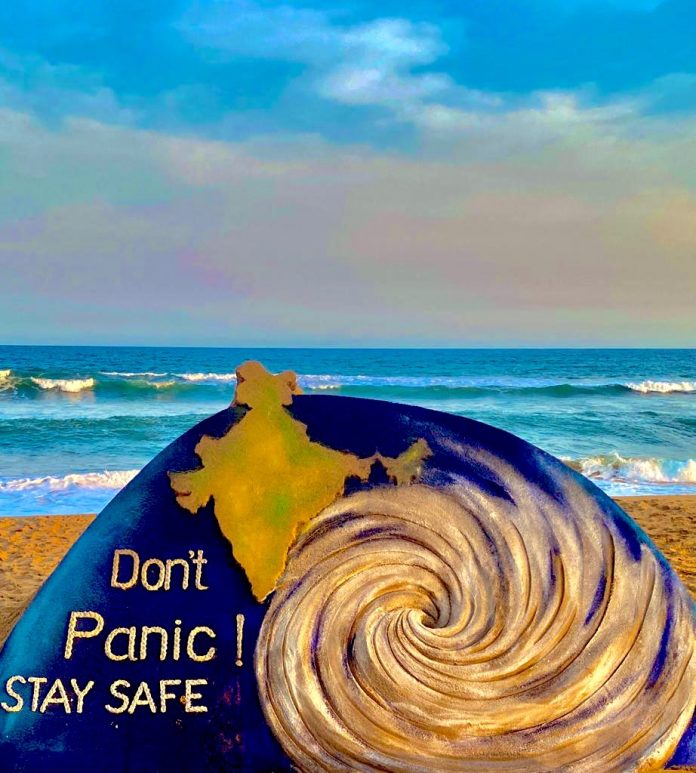Cyclone Warning Systems
By PIB Delhi
In order to cater to the needs of Cyclone Warning Services and Marine weather services, there are seven established Cyclone Warning Centers covering the east & west coasts of our country. Among these, three are Area Cyclone Warning Centres (ACWCs) located at Chennai, Mumbai and Kolkata and remaining four are Cyclone Warning Centres (CWCs) located at Ahmadabad, Thiruvananthapuram, Visakhapatnam and Bhubaneswar. Area of responsibility of ACWCs and CWCs is shown in the Table below.
Centre Coastal area* Maritime State/UT ACWC Kolkata State: West BengalUT: Andaman & Nicobar Islands State: West BengalUT: Andaman & Nicobar Islands ACWC Chennai State: Tamil NaduUT: Puducherry State: Tamil NaduUT: Puducherry ACWC Mumbai State: Maharashtra & Goa State: Maharashtra & Goa CWC Thiruvananthapuram State: Kerala & KarnatakaUT: Lakshadweep State: Kerala & KarnatakaUT: Lakshadweep CWC Ahmadabad State: GujaratUT: Dadra-Nagar Haveli-Daman-Diu State: GujaratUT: Dadra-Nagar Haveli-Daman-Diu CWC Visakhapatnam State: Andhra Pradesh State: Andhra Pradesh CWC Bhubaneshwar State: Odisha State: Odisha
*Coastal strip of responsibility extends upto 75 km from the coast line.
India Meteorological Department (IMD) has developed state of art tools for cyclone warning services, and has demonstrated its capability to provide early warning for Cyclones with high precision and has earned accolades globally and nationally for very effective state of art early warning system for monitoring and prediction of cyclones. The cyclone forecast accuracy has significantly improved in recent years as has been demonstrated during cyclones Phailin (2013), Hudhud (2014), Vardah (2016), Titli (2018), Fani& Bulbul (2019) and Amphan, Nisarga&Nivar (2020). During recent years, the loss of life due to cyclone has been drastically reduced being limited to double digit figures.
Further, enhancing the accuracy of weather forecasts and their more effective & timely dissemination in the ensuing years is a continuing process. For this purpose, under the Umbrella Scheme entitled ‘Atmospheric & Climate Research – Modeling Observing Systems & Services (ACROSS), a sub-scheme has been planned viz., ‘Upgradation of Forecast Services’. The various components of this sub-scheme include;
- Development of an advanced operational forecast system
- Upgradation and sustenance of communication systems for weather services
- Capacity building & outreach etc.
This along with further improvements in the observational network and numerical modeling capability planned under ACROSS are also expected to increase the accuracy of weather forecasts.
Also, Indian National Centre for Ocean Information Services (INCOIS) has set up Storm Surge Early Warning System (SSEWS) for the Indian coasts in active collaboration with IMD. Prime objective of this service is to save the lives of coastal community by forecasting cyclone induced storm surges and inundation extent.
Further, the Government of India has initiated the National Cyclone Risk Mitigation Project (NCRMP) with a view to address cyclone risks in the country. The overall objective of the Project is to undertake suitable structural and non-structural measures to mitigate the effects of cyclones in the coastal states and UTs of India. National Disaster Management Authority (NDMA) under the aegis of Ministry of Home Affairs (MHA) will implement this Project in coordination with participating State Governments. The Project has identified 13 cyclone prone States and Union Territories (UTs), with varying levels of vulnerability.
Under Phase–2 of the NCRMP, NDMA in collaboration with IMD has developed a web based Dynamic Composite Risk Analysis (Web-DCRA) & Decision Support System (DSS) tool for forecasting the expected damage associated with the Landfalling cyclones over the coastal districts of our country. This will enable the disaster managers for a better assessment of the vulnerable areas and in mobilizing the mitigation action based on this.
INCOIS has developed a device named GEMINI (GAGAN Enabled Mariner’s Instrument for Navigation and Information) a simple handheld device that receives the information transmitted through GAGAN and feeds that to the mobile handset through Bluetooth connection. An App developed by INCOIS converts the satellite messages in the form of readable maps and text. The decoded information can be viewed on the mobile in any of the languages spoken in the coastal states of India. The Mobile app receives the GPS information (Current Position, Satellite Date & Time) as well as the following broadcasted messages.
- Potential Fishing Zone Advisory
- High Wave Alert & Strong Wind Alert
- Cyclone and Tsunami Warning Information
- Maximum Wind Speed, Maximum Wave Height, Maximum Current Speed
5. Bathymetry, Distance & Direction
Govt. of India has made provision for such devices under the Pradhan Mantri MatsyaSampada Yojana (PMSSY) scheme. Under this scheme, support is provided to procure PFZ devises, network and cost of installation as part of “Strengthening of safety and security of fishermen”.
This information was given by Dr. Harsh Vardhan, Union Minister for Science & Technology, Earth Sciences and Health & Family Welfare in a written reply in Rajya Sabha today.




















